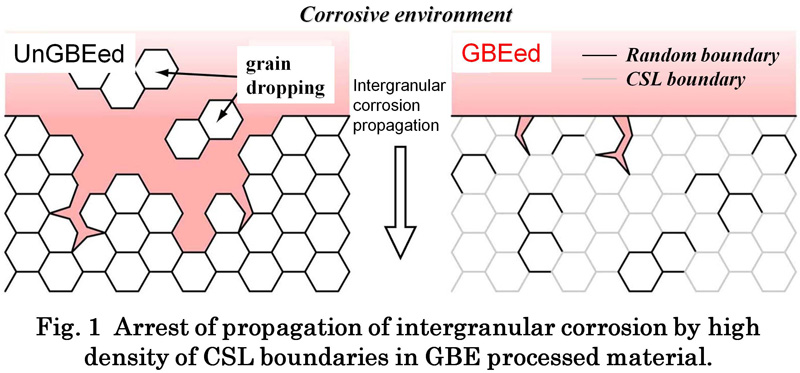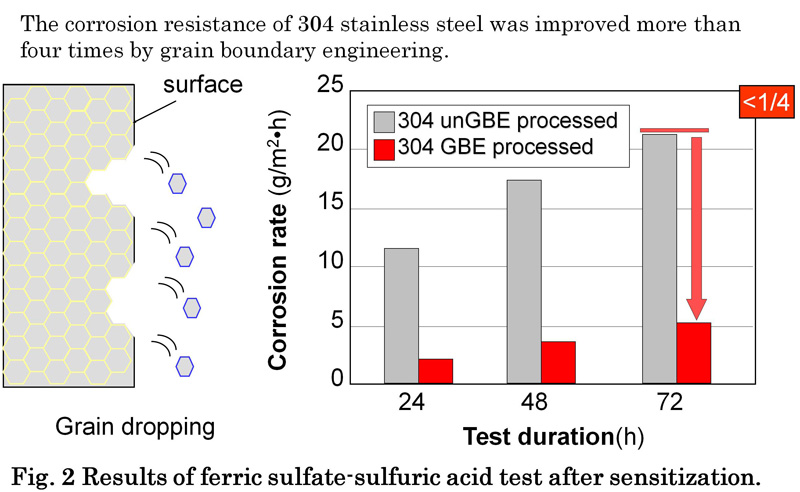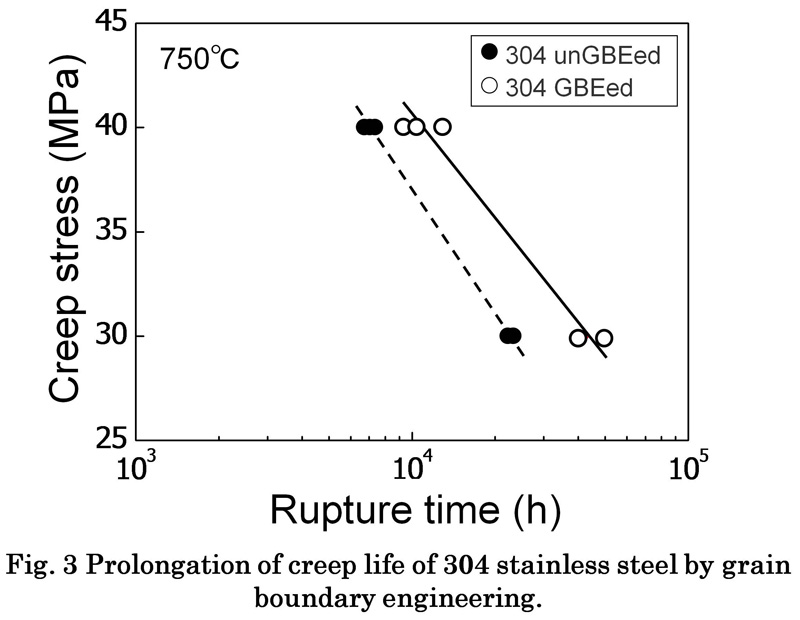 Suppression of Intergranular Degradation of Polycrystalline Materials by Grain Boundary Engineering
Suppression of Intergranular Degradation of Polycrystalline Materials by Grain Boundary Engineering
update:2020/06/16
- Features and Uniqueness
-
- Intergranular degradation often results in decreased lifetime, reliability and economical efficiency of polycrystalline materials. In spite of persistent efforts to prevent such degradation, its complete suppression has not yet been achieved. Grain boundary studies have revealed that coincidence-site-lattice (CSL) boundaries have stronger resistance to intergranular degradations than random boundaries. The concept of ‘grain boundary design and control' has been refined as grain boundary engineering (GBE). GBEed materials which are characterized by high frequencies of CSL boundaries are resistant to intergranular degradations. Our group has achieved very high frequencies of CSL boundaries in commercial stainless steels by GBE. GBEed stainless steels showed significantly stronger resistance to intergranular corrosion (see Figs. 1 and 2), weld-decay, knife-line attack, stress corrosion cracking, liquid-metal embrittlement, radiation damage, etc. and much longer creep life (see Fig. 3) than the unGBEed ones.
- Practical Application
-
By using this GBE processing, we expect to conduct effective collaborative research in related fields.
- Keywords


 Medical
Medical
 Life Sciences
Life Sciences
 Information Communication
Information Communication
 Nanotechnology / Materials
Nanotechnology / Materials
 Energy
Energy
 Manufacturing Technology
Manufacturing Technology
 Social Infrastructure
Social Infrastructure
 Frontier
Frontier
 Liberal Arts
Liberal Arts




